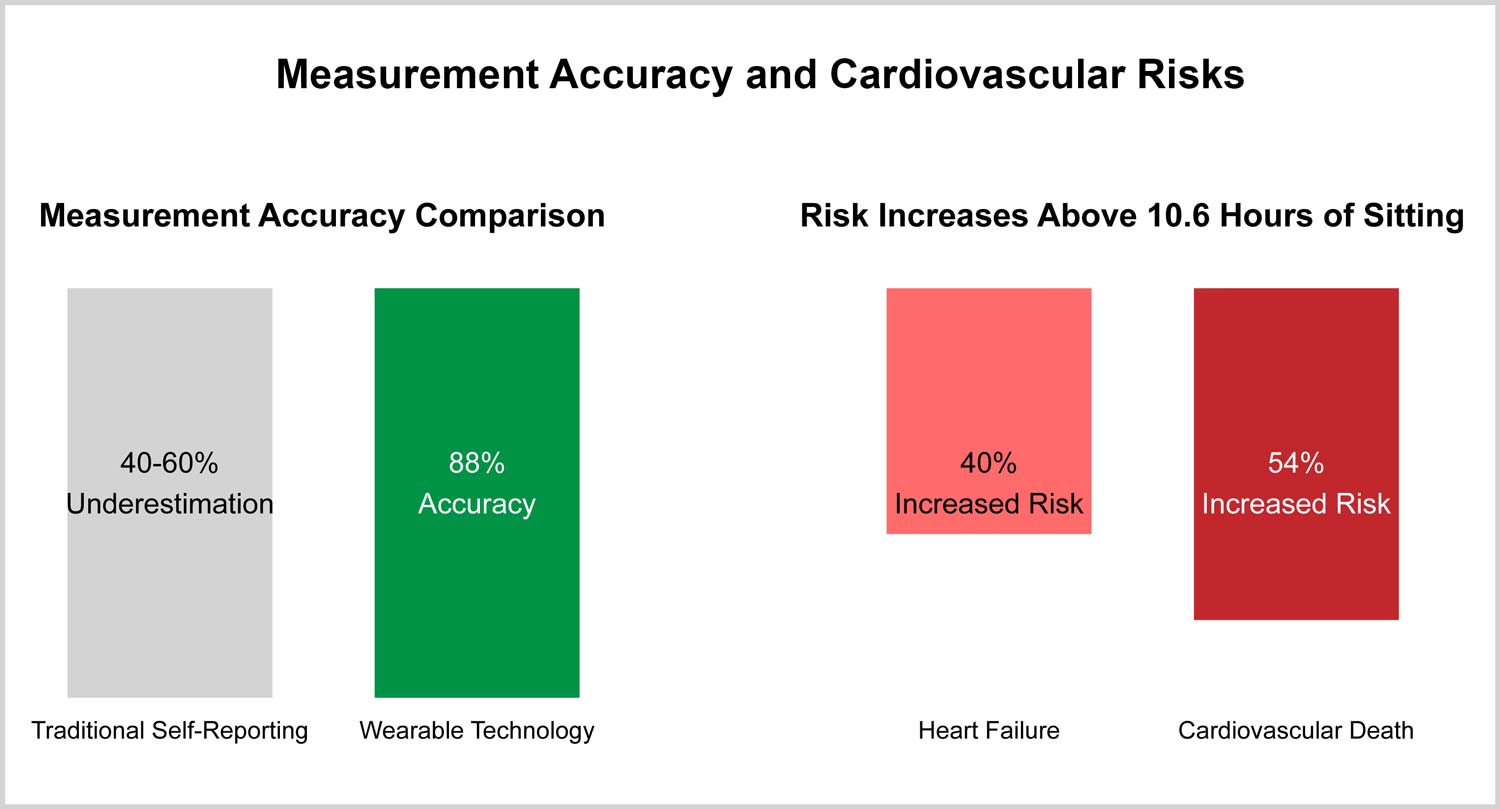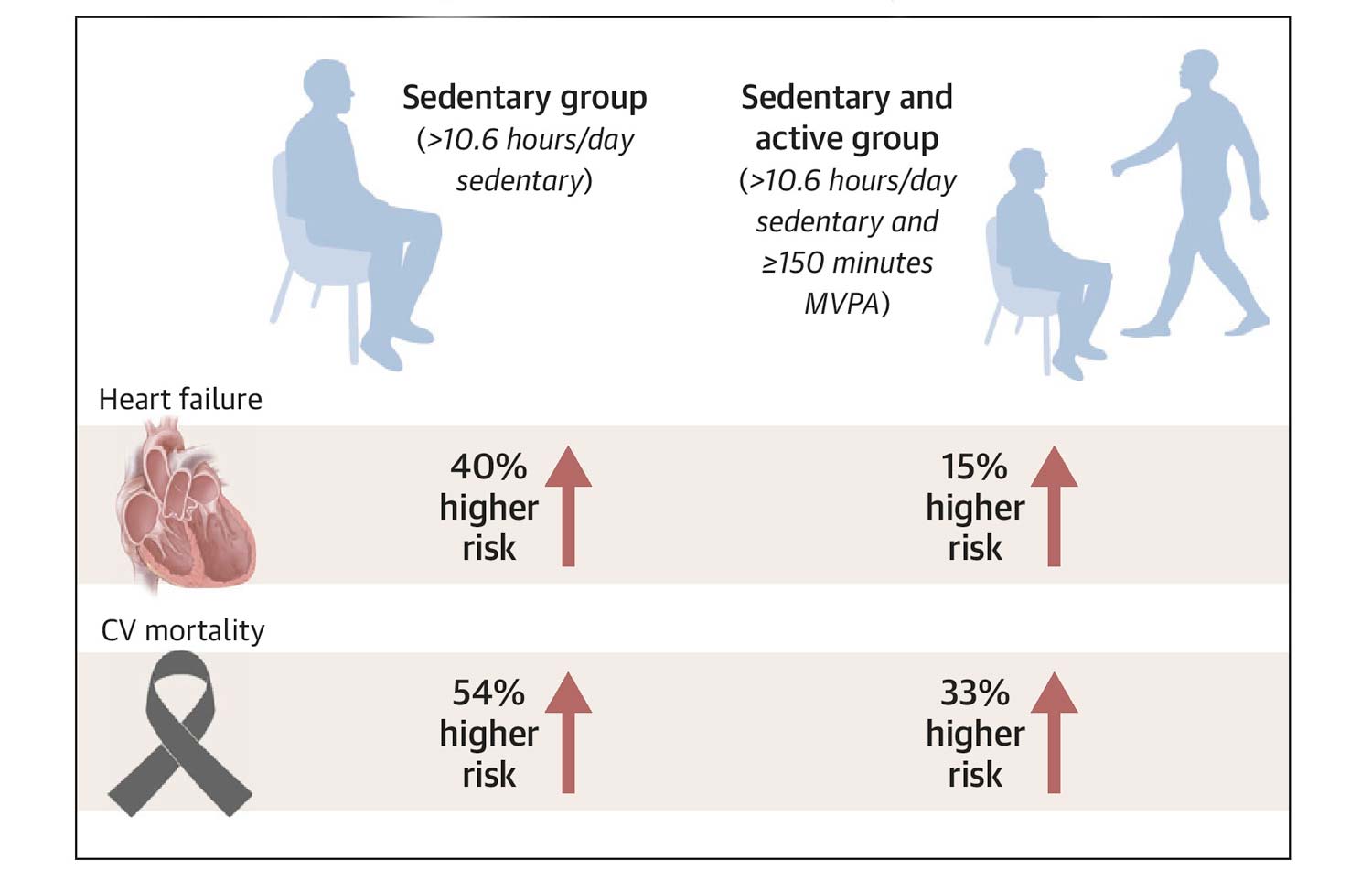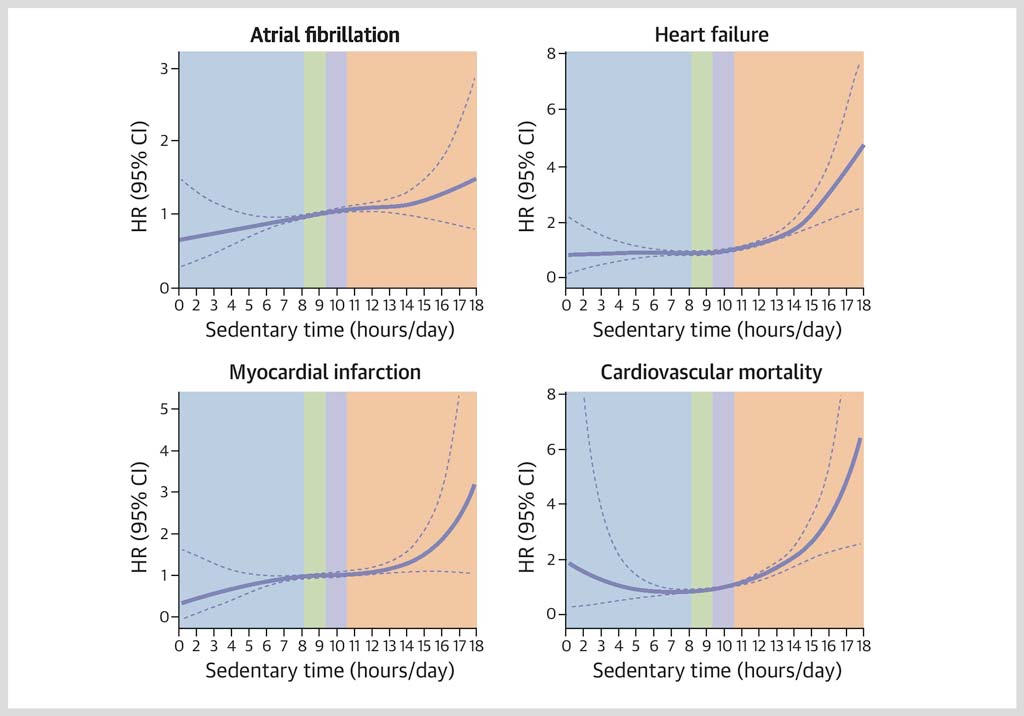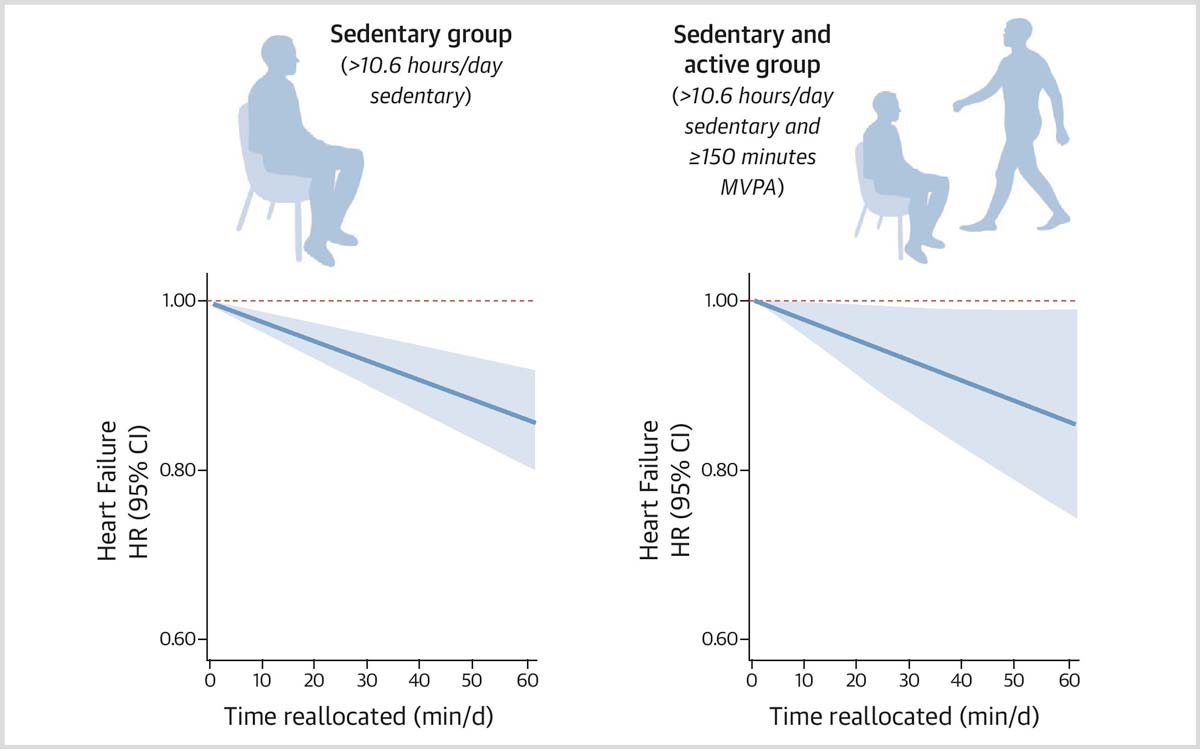Hidden dangers of prolonged sitting pose serious risks to daily sitting threatens heart health, affecting millions who spend long hours seated.
An extensive study of 89,530 people reveals striking evidence about the risks of prolonged sitting, measured with unprecedented precision through wearable technology rather than unreliable self-reporting.
The findings reveal how modern lifestyles affect our cardiovascular system. Previous research suggested that regular exercise might offset the effects of extended sitting. However, this new data shows that daily sitting threatens heart health in ways that even regular exercise cannot fully counteract.
Our understanding of sitting’s impact on health has evolved significantly. Traditional studies relied heavily on people’s memories and estimates of their sitting time, often leading to underestimation by 40% to 60%.
This new research employs sophisticated machine learning algorithms to analyse actual movement patterns, providing an unmatched level of accuracy in measuring daily activities.
These findings highlight multiple health impacts. Consider how many hours you spend sitting daily—during meals, commuting, at work, watching television, or browsing your phone. These moments accumulate, creating a pattern that might significantly influence your cardiovascular health, regardless of your fitness routine.
In the following sections, we’ll explore the precise threshold at which sitting becomes particularly dangerous. We will also examine how different heart problems respond to prolonged sitting and understand why regular exercise alone might not provide complete protection. The revelations from this research might transform how you think about your daily routine.

Daily Sitting Threatens Heart More Than Previously Known
Advanced technology has revolutionised how researchers measure physical activity. Previous studies relied on participants remembering their daily routines. However, new research shows with unprecedented accuracy how daily sitting threatens heart health.
This study used wrist-worn devices that tracked movement every second for a week. Machine learning algorithms classified activities into four categories:
- Sleep
- Sitting
- Light activity
- Moderate-to-vigorous physical activity (MVPA).
This method proved 88% accurate in identifying specific movements.
The research revealed significant cardiovascular risks. Participants who sat for extended periods showed higher rates of atrial fibrillation (irregular heartbeat), myocardial infarction (heart attack), and heart failure (when the heart cannot pump blood effectively). Most notably, daily sitting threatens heart health, even among those who exercise regularly.
The study’s massive scale, tracking 89,530 participants over eight years, sets it apart from previous research. This extensive data allowed researchers to identify precise patterns in how sitting affects different heart conditions, leading to the revelation that sitting more than 10.6 hours daily increases the risk of heart failure by 40% and cardiovascular death by 54%.
Traditional heart health guidelines focus primarily on exercise recommendations. Yet these findings indicate that sitting time requires equal attention. Researchers first established a clear threshold where sitting becomes harmful, backed by objective measurement rather than estimated behaviour.

The 10.6 Hour Threshold From Real-World Data
The research identified a crucial tipping point, or ‘threshold,’ at which daily sitting threatens heart health. Analysis of movement patterns from 89,530 participants revealed that risks increase sharply after 10.6 hours of daily sitting.
This threshold emerged from examining how different amounts of sitting time affected heart health. People typically sat for 9.4 hours daily, but those exceeding 10.6 hours showed dramatic increases in heart problems. The research tracked these patterns across an average of eight years.
Notably, participants crossed this 10.6-hour threshold about twice per week. Each additional day spent above this limit increased heart failure risk by 7% and cardiovascular death risk by 10%. The findings show that daily sitting threatens heart health most significantly when this threshold is crossed four or more days weekly.
This threshold’s precision comes from machine learning analysis of movement data. Rather than relying on general guidelines, researchers identified when sitting behaviour becomes harmful with a high degree of accuracy. This specificity helps explain why some people face higher cardiovascular risks despite maintaining regular exercise habits, giving you confidence in the findings.
These findings have real-world implications for our common daily patterns. A typical schedule might include 8 hours of office work, 2 hours of evening television, sitting during meals and commuting. These activities can quickly accumulate beyond the 10.6-hour threshold without people realising the risks. This research brings these risks to light, making you more aware and conscious of your daily habits and potentially prompting you to make changes to reduce your sitting time.

Why Different Heart Problems React Differently
Different heart conditions show varying responses to prolonged sitting. The study reveals that daily sitting threatens heart health through multiple pathways, uniquely affecting different cardiovascular functions.
Two conditions show a dramatic response above the 10.6-hour threshold. Heart failure (when the heart cannot pump blood effectively) and cardiovascular mortality demonstrate a sharp increase in risk beyond this point. The risk rises steeply, suggesting these conditions are susceptible to extended periods of inactivity.
In contrast, atrial fibrillation (irregular heartbeat) and myocardial infarction (heart attack) show a steady, linear increase with sitting time. These conditions display a more gradual rise in risk as sitting hours accumulate, though daily sitting threatens heart health consistently across all these conditions.
The distinction lies in how these conditions develop. Heart failure and cardiovascular death risks show a clear tipping point, suggesting a threshold where the body’s compensatory mechanisms become overwhelmed. Atrial fibrillation and heart attacks, however, appear to accumulate risk more gradually, reflecting their different biological mechanisms.
These patterns highlight how various heart problems respond differently to sedentary behaviour. While all cardiovascular conditions show increased risk with prolonged sitting, the timing and intensity of these risks vary significantly across different heart problems.

Daily Sitting Threatens Heart Despite Your Gym Time
Regular exercise provides numerous health benefits, yet research shows that daily sitting threatens heart health even among physically active people. While crucial, the study reveals that meeting exercise guidelines cannot thoroughly neutralise the risks of prolonged sitting.
People who exercise regularly but sit more than 10.6 hours daily still face significant risks. As shown in the image above, the study directly compared two groups: those who only sit extensively and those who both exercise regularly.
Even those achieving 150 minutes of moderate-to-vigorous physical activity weekly show a 15% higher risk of heart failure and 33% higher risk of cardiovascular death compared to less sedentary individuals. The graphs demonstrate how replacing sitting time with other activities can lower these risks for both groups.
The relationship between sitting time and cardiovascular health operates independently of exercise habits. While daily sitting threatens heart health less severely in active individuals, the protection is partial rather than complete. Individuals meeting exercise guidelines but sitting extensively face about half the excess risk compared to inactive people who sit for extended periods.
These findings challenge the common belief that a morning gym session or evening run can counteract a day spent sitting. The body responds to prolonged sitting through multiple mechanisms that affect cardiovascular health, regardless of fitness level. Blood flow patterns, metabolic processes, and inflammatory responses all change during extended periods of sitting.
Exercise remains vitally important for overall health and longevity. Regular physical activity strengthens the heart, improves circulation, and provides countless other health benefits that cannot be replicated through any other means. This research doesn’t diminish exercise’s importance but highlights the need to complement it with reduced sitting time.
The findings emphasise that optimal heart health requires a comprehensive approach. While maintaining regular exercise routines, we must also be mindful of extended daytime sitting periods. This balanced understanding helps create a complete picture of how daily activities influence cardiovascular health.

Sources
- Ajufo E, Kany S, Rämö JT, Churchill TW, Guseh JS, Aragam KG, Ellinor PT, Khurshid S. Accelerometer-Measured Sedentary Behavior and Risk of Future Cardiovascular Disease. J Am Coll Cardiol. 2024 Nov 11:S0735-1097(24)09920-0.
- Dunstan DW, Dogra S, Carter SE, Owen N. Sit less and move more for cardiovascular health: emerging insights and opportunities. Nat Rev Cardiol, 18 (9) (2021), pp. 637-648.
- Katzmarzyk PT, Powell KE, Jakicic JM, Troiano RP, Piercy K, Tennant B. Sedentary behavior and health: update from the 2018 Physical Activity Guidelines Advisory Committee. Med Sci Sports Exerc, 51 (6) (2019), pp. 1227-1241.
- Kerr J, Patterson RE, Ellis K, Godbole S, Johnson E, Lanckriet G, Staudenmayer J. Objective assessment of physical activity: classifiers for public health. Med Sci Sports Exerc, 48 (5) (2016), pp. 951-957.
- Li S, Lear SA, Rangarajan S, Hu B, Yin L, Yusuf S, et al. Association of sitting time with mortality and cardiovascular events in high-income, middle-income, and low-income countries. JAMA Cardiol, 7 (8) (2022), pp. 796-807.
- Owen N, Healy GN, Dempsey PC, Salmon J, Timperio A, Clark BK, Goode AD, Koorts H, Ridgers ND, Hadgraft NT, Lambert G, Eakin EG, Kingwell BA, Dunstan DW. Sedentary behavior and public health: integrating the evidence and identifying potential solutions. Annu Rev Public Health, 41 (2020), pp. 265-287.
- Patterson R, McNamara E, Tainio M, de Sá TH, Smith AD, Sharp SJ, Edwards P, Woodcock J, Brage S, Wijndaele K. Sedentary behaviour and risk of all-cause, cardiovascular and cancer mortality, and incident type 2 diabetes: a systematic review and dose response meta-analysis. Eur J Epidemiol, 33 (9) (2018), pp. 811-829.
- Stamatakis E, Ekelund U, Ding D, Hamer M, Bauman AE, Lee IM. Is the time right for quantitative public health guidelines on sitting? A narrative review of sedentary behaviour research paradigms and findings. Br J Sports Med, 53 (6) (2019), pp. 377-382.
- Young DR, Hivert MF, Alhassan S, Camhi SM, Ferguson JF, Katzmarzyk PT, Lewis CE, Owen N, Perry CK, Siddique J, Yong CM. Sedentary behavior and cardiovascular morbidity and mortality: a science advisory from the American Heart Association. Circulation, 134 (13) (2016), pp. e262-e279.




Very interesting!